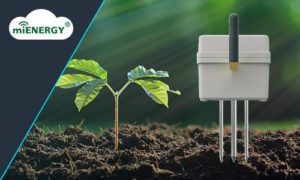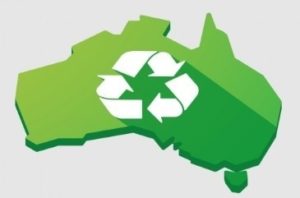For Thinxtra, IoT is all about creating efficiencies and thus empowering businesses and government with sensible IoT solutions to bring new business opportunities and reduce costs of doing business (while reducing carbon footprint at the same time).
For the past 3 years, Thinxtra has been hammering, mainly on Linkedin (targeting leaders and CxOs), on the importance of combining IoT and sustainability as the winning formula for a brighter future. This is how Thinxtra is thriving everyday to make a difference: Supporting local partners to develop the right solutions, embedded with compelling economics to make IoT a reality. We believe businesses would get more involved with IoT if there were clear and obvious benefits to their bottom line. If on top of that, the solutions are opening new business opportunities, and, are good for the environment, then, there are no more barriers for implementation.
In short, IoT benefits are the cake, sustainability is the icing.
Thinxtra focus on 3 levels of sustainability where there are opportunities with IoT:
- LPWAN technology
Thinxtra is the Sigfox network operator in Australia, New Zealand and Hong Kong and has rolled out the low power, low-cost connectivity nationwide networks to reduce the carbon footprint of companies by using connected devices combined with intelligent platforms. Clean Energy Finance Corp invested in Thinxtra for that purpose: “help lower Australia’s carbon emissions by investing in renewable energy, energy efficiency and low emissions technologies.”
Lower cost IoT solutions mean the threshold to be involved with IoT is lower, the ROI is higher and thus less friction to get businesses starting their journey towards efficient monitoring and tracking thus reducing wastes.
IoT can have an impact in pretty much any industries and hereafter some simple business opportunities with positive and green aspects:
-
- Crop management
Implementing IoT into the agriculture sector has many benefits. First off, crop management uses various small and smart sensors that monitor humidity, temperature thus maximising water use with regards to weather conditions. Therefore, farmers may now gain a better overview and control over their lands and consequently reduce fertilizer use as well as optimise irrigation.
-
- Smart bins
Trash bins that embed smart IoT devices improves waste collection as sensors detect whether bins are full or empty, thus optimising the trucks’ route, not only saving fuel and time but also reducing traffic and pollution. Read the use case and case study made with Brimbank City Council.
-
- Smart buildings
Buildings are the biggest consumers of energy. Any solutions reducing power consumption brings value. For example, aggregating IoT sensors into air conditioning systems help building managers monitor air quality, predict optimal maintenance interventions and therefore avoid electricity overconsumption or pollution. Some global manufacturers from Japan (confidential) are already embedding Sigfox technology into their HVAC systems for that purpose: Improving service and the performance of their equipment is their first objective with the added bonus of reducing power consumption.
-
- City trees & Bushfire monitoring

An underestimated issue is the stress on city trees which are dying, at an unprecedented rate the past 3 years, in the Australian cities (specially in Sydney and Adelaide). Replacing trees is more expensive than efficiently watering them. Few projects are emerging to potentially connect millions of trees with Sigfox in Australia.
Another one is the increase in bushfires. Stopping bushfire is easier when you have early signs. A new solution is to be announced next month.
-
- Ocean floor monitoring
The LobsterNet project turns lobster pots into a smart traps with sensor connected via Sigfox, collect high resolution data about ocean conditions at scale and over time, and generate information products of value to all commercial and recreational fishermen, researchers, and the larger blue economy.
“IoT solutions exist in Australia to fix all those issues and the economics are now compelling with Thinxtra’s Sigfox LPWA Network. Not just compelling but those simple IoT solutions have open the door for new business opportunities, while being relevant to reducing carbon footprint.” says Loic Barancourt, CEO of Thinxtra.
- Energy harvesting devices and green batteries
When you think that by 2025 there should be 20 billions IoT devices*, with most devices battery powered, this is a massive potential hazard to the environment that needs to be addressed now. Sigfox’s low-cost connectivity makes IoT a viable option to connect everything. Sigfox technology as the preferred choice for IoT is 100 times less power-consuming than 3G. Sigfox is able to reduce power consumption and therefore the size of the batteries with no impact on battery life because the messages transferred use smaller amounts of data and devices only work for one or two seconds several times a day.

Another alley, we are investigating is low cost green batteries made of hydrogen or sodium-ion, clearly not polluting, and the good news, Australia is a leader in this field of research.
“This is another opportunity to differentiate and bring to the global Sigfox ecosystem unique solutions, made in Australia (and more likely manufacture in Asia) and distributed by Thinxtra Hong Kong hub.” commented Renald Gallis, VP Marketing & Ecosystem
- Recycling

The whole ecosystem of IoT solutions providers are not there yet as IoT is still in its early days and so, not that many products (if any) are at end of life, but, Thinxtra is already in the process of developing a recycling policy with its local partners to ensure that they integrate reusable components and that they facilitate the shipping of end-of-life devices back to treatment facilities. Even though it would be hard to create a circular economy with IoT devices, this should be envisioned in the future.
Some may see this as a constraint, Thinxtra sees this as an opportunity to further differentiate our offering. Nobody will ever blame you for being green.
“Sustainability is a priority for Thinxtra because, beyond the green aspect, it opens the door for many new business applications and opportunities.”
Overall,
Thinxtra’s goal, along its partners, is to provide, promote and support ecological and sustainable IoT solutions that have positive impacts on the businesses and the environment.
About Thinxtra
Thinxtra is empowering the Internet of Things in Australia, New Zealand and Hong Kong by operating the world-leading Sigfox LPWA network as well as enabling a full eco-system of IoT solutions and services partners to connect the non-connected, to increase productivity, to accelerate decision making, to improve quality of service and quality of life, and to find more economical solutions to common problems with the ultimate aim to create more efficiencies in a carbon constrained world.


